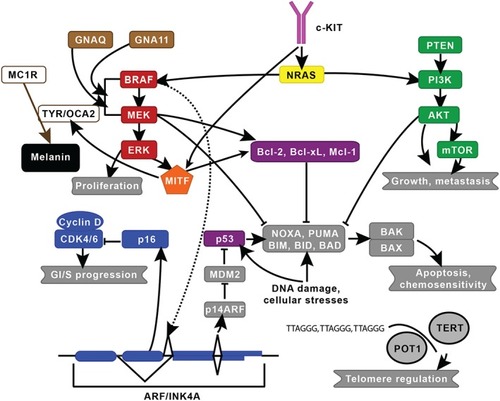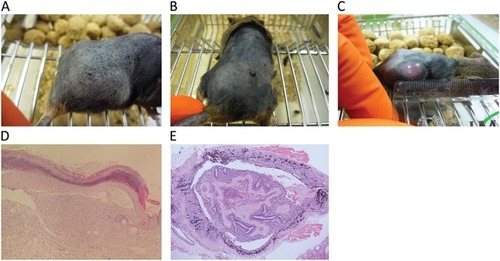- Title
-
Cross-species models of human melanoma
- Authors
- van der Weyden, L., Patton, E.E., Wood, G.A., Foote, A., Brenn, T., Arends, M.J., Adams, D.J.
- Source
- Full text @ J. Pathol.
|
Established melanoma pathways. The two major signalling pathways implicated in melanoma are the mitogen‐activated protein kinase and the phosphatidylinositol‐4,5‐bisphosphate 3‐kinase pathways, which are in red and green, respectively. Key genes include c‐KIT (pink), CDK (blue), GNAQ/GNA11 (brown), MITF (orange), NRAS (yellow), and P53/BCL (purple). MC1R, which is involved in skin pigmentation, and TERT and POT1, which are involved in telomere regulation, are also shown. This figure was modified from Vidwans |
|
Naevi and melanomas driven by oncogenic forms of |
|
Canine, equine, and zebrafish melanoma. (A) A canine melanoma developing in the nasal cavity and (B) spreading to the viscera, particularly the liver. (C) An equine melanoma showing multinodular dermal lesions around the tail base and masses expanding into the pelvic canal and regional nodes. (D) An equine spleen with multiple malignant melanomas, and liver and lymph node from the same case. (E) Melanomas arising in a |



